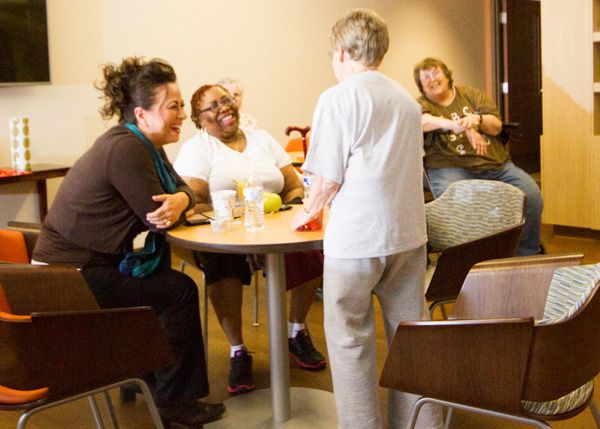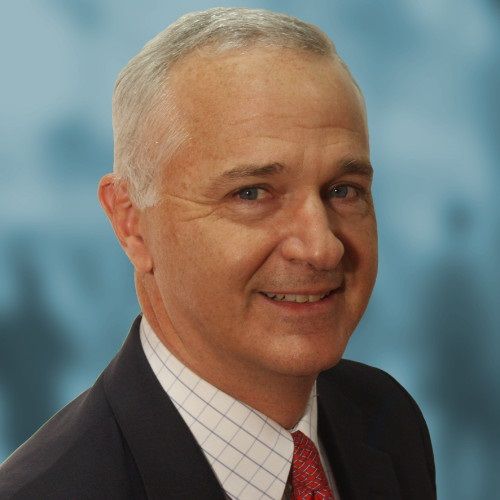Article
Practice Innovators: Reinventing primary care
The obstacles facing practicing physicians are numerous, but can be overcome with the help of great ideas put into action effectively. In order to foster the sharing of new ideas among physicians, Medical Economics introduces Practice Innovators, an ongoing, periodic series spotlighting your colleagues who are breaking new ground in medical practice-and succeeding.
Rushika Fernandopulle, MD, has a modest career ambition. All he wants to do is reinvent primary care.
Fernandopulle’s vehicle for accomplishing that seemingly Herculean task is Iora Health, a company he co-founded four years ago and of which he is now chief executive officer. Iora serves about 12,000 patients through 12 practices in seven states, using a team-based approach that encourages strong relationships between patients and providers, as well as involvement of patients themselves and family members in managing diseases and altering lifestyles.

Rushika Fernandopulle, MD“In the typical practice often the model is that I, the doctor, will improve your health” Fernandopulle says. “We think the patient and the family needs to improve their health, and we as a health provider need to give them the tools to do that.”
To that end, Iora practices make extensive use of health coaches, support groups and classes to help patients learn more about managing their diseases and conditions. “An Iora doc’s job isn’t to walk in the door each morning and see a bunch of patients one after the other, do the best job they can, and move on,” Fernandopulle says. “Our job is to improve their health and keep them out of trouble, meaning out of the hospital or emergency department. And we should be able to do whatever it takes to achieve that.”
Related E-Book | The Definitive Guide to an EHR Switch
(Editor’s note: Iora’s medical director, David Judge, MD, is a Medical Economics editorial board member.)
Another feature distinguishing Iora from traditional primary care practices is its business model. Rather than fee-for-service, Iora relies on risk-adjusted capitation fees from the organizations-employers, unions, and Medicare managed care plans-through whom it contracts for patients, supplemented by shared savings and quality bonuses. Eliminating fee-for-service means providers don’t need to be “code monkeys,” Fernandopulle says, and frees up their time to focus on patient care.
Related:Practice Innovators: Building for success
“Our billing at most of our practices is literally a one-line e-mail once a month that says, ‘we have this many patients, here’s the amount of money you agreed to pay us per-patient, here’s what you should send a check for.’ So we’re not doing bills and codes and that’s a hugely liberating thing.”
“I think fee-for-service is toxic to primary care and the wrong way to pay for it,” he adds. “So we won’t do it.”
Iora’s approach to care delivery reflects Fernandopulle’s own experiences as a primary care provider working at a practice affiliated with a large teaching hospital-the kind of place, he says, where “in a typical day you see a ton of patients and then are staying late to try and finish your charts.”
He experienced an epiphany of sorts, he recalls, when a colleague said to him, “every day I lose a little piece of my soul. I went into this to try and help patients and I just can’t, given the structure of seven-minute visits and all the distractions we have to deal with.”
“I think that’s when the realization hit,” he continues. “Instead of just complaining about it, maybe what we ought to do is to start over, and consciously design the process that we think will lead to better outcomes for patients, the same way we design the right drugs and the right procedures?”
NEXT: The difference between Iora and a "traditional" clinic
According to Fernandopulle, differences between an Iora clinic and more traditional primary care practices are apparent from the time a patient walks in the door. Waiting rooms (Iora calls them “reception areas”) are smaller, and receptionists are not positioned behind a glass window. Patients are assigned a health coach who lives in the area and speaks the patient’s language. Doctors can spend as much time as they feel is necessary with a patient, and patients have online access to all their records including the physician’s notes. “If you’re going to be empowered to manage your health you should know what’s going on,” Fernandopulle says.

Yoga class at Turntable Health, a primary care practice in Las Vegas, Nevada
In addition, patients have 24/7 access to at least one member of his or her care team, and can schedule visits online. Those can be in-person, video, or telephone. “We’re reasonably indifferent to those, depending on the problem. You don’t need to come in if we can do it remotely. And if there’s something you’re working on the health coach or doc will call or send you an e-mail to make sure things are going well,” Fernandopulle says.
Related:Why primary care physicians are seeing fewer patients
Not all the differences in Iora’s approach are apparent to patients. Before the start of each day, for example, practices engage in employee huddles. Staff members take turns leading them, so everyone gets a chance to be in charge, not just the physicians. In addition, says Fernandopulle, rather than talking about that days’ patients, “we spend most of the time talking about the people who are not coming in and getting into trouble, and what we can do to reach out to them.”
Another difference patients may not see is technological. Iora has designed its own electronic health record (EHR) system platform, tailored specifically to its needs. Most EHRs, he says, are designed for coding and billing purposes, rather than to help doctors help their patients. “So we decided early on that we had to build our own. Its only goal is, how do we take a population of people, help them improve their health, and keep them out of trouble?”
Among the features of Iora’s EHR system is a tool that identifies all patients in a practice with a condition such as hypertension, making them easier for providers and health coaches to contact.
Iora tracks its practices’ progress in five categories that Fernandopulle calls the “quintuple aim.” These include:
- Clinical outcomes , as measured through Healthcare Effectiveness Data and Information Set scores as well as patient-reported outcomes,
- Utilization rates (emergency department visits, hospitalizations, etc.),
- Patient experience , measured through “net promoter” scores (the number of patients who would recommend Iora to friends and family members),
- Employee satisfaction , measured through use of the Happiness at Work survey, and
- Profitability
Regarding the latter, Fernandopulle says, the decision to adopt a for-profit business model was motivated by a desire to expand. “For us to get to scale, we need to have enough capital to hire people and build practices and the like. And it’s easier to do that as a for-profit than as a not-for-profit,” he says. “At the end of the day, you have to have money in the bank. Otherwise you go out of business.”
NEXT: Iora connects patients to specialists
When Iora providers refer patients to specialists, they do so largely within what Fernandopulle calls a “de facto narrow network.” “We find a small group of specialists who understand the way we work and who we think have the same standards as to how to treat patients,” he says. “We use specialists largely as consultants to help us manage patients.”
If a patient is hospitalized, he says, the Iora physician will be in daily contact with the hospitalists and will coordinate the patient’s discharge plan and post-discharge care. “It’s a collaborative way of working with a small group of folks who we think are working well with us.”

Seniors in Phoenix-area Iora Health Clinic
Even so, Iora practices struggle with many of the same frustrations as primary care practices everywhere, from sending and receiving patient information electronically to helping patients with problems such as lack of access to fresh foods and safe places to exercise. “The good news is that we have resources that many practices don’t, like health coaches and social workers, who can help with these things,” Fernandopulle says.
Among the institutions contracting with Iora is Dartmouth College in Hanover, N.H., which has offered Iora’s Dartmouth Connect practice as an option to its employees since 2012. About 1600 college employees get care through the practice, according to Rick Mills, Dartmouth executive vice president.
Related:Primary care can extinguish fee-for-service, study says
So far, says Mills, the overall claims history among employees using Iora have been about on par with those using fee-for-service practices. Claims stemming from Iora itself are higher than would be expected from the relatively young, healthy population using Iora. Mills attributes that to patients’ greater willingness to use Iora’s services compared with those of fee-for-service practices. But those are offset by lower specialist and pharmacy claims.
“We believe that over the long term, early management and better health status will yield savings, but we haven’t been with them long enough to be able to say that,” Mills says.
Still, Iora has been enormously popular among the patients who use it, scoring in the 90% range on the net promoter survey. “Iora is the one benefit we offer for which I’m routinely thanked by employees, who tell me how great it is and how much they appreciate it,” he says.
Partly as a result of Iora’s glowing reviews, Mills and his wife have chosen Dartmouth Connect as their primary care provider. Their experience? “It’s spectacular,” he says. “When I go in, the doc knows who I am. When I have questions, whether it’s a phone call or an e-mail I get an answer very quickly, and not just a generic answer. Someone has looked at my record.” His wife, he adds, includes Iora among the things she likes most about the couple’s decision to move to Hanover from Boston (where Mills had worked for Harvard Medical School).
Responses like that are among the reasons Fernandopulle predicts that Iora will double in size by the end of 2016, and continue growing thereafter. “Our mission, again, is to try and reform healthcare,” he says. “And the way to do that is not by talking about it, but by building a better model. Better for patients, better for doctors, better for the system. And get patients and docs to vote with their feet and join us.”
NEXT: Takeaways for primary care practices from Rushika Fernandopulle, MD
Takeaways for primary care practices
What are some techniques used in Iora clinics that independent practices can adopt?
- Focus on culture and the people. Our job is serving patients. If there are people who don’t fit, you need to make a change.
- Huddle every morning, even for 5-10 minutes, and let everyone take a turn running it. This will get the team on same page.
- Experiment with groups. Patients love it, and it is a very efficient way to improve health.
- Email with patients -it is 2015, and people expect it.
- Start a patient advisory group. Once a quarter invite a group of patients to join you for dinner or snacks to discuss how you can make the practice better.





